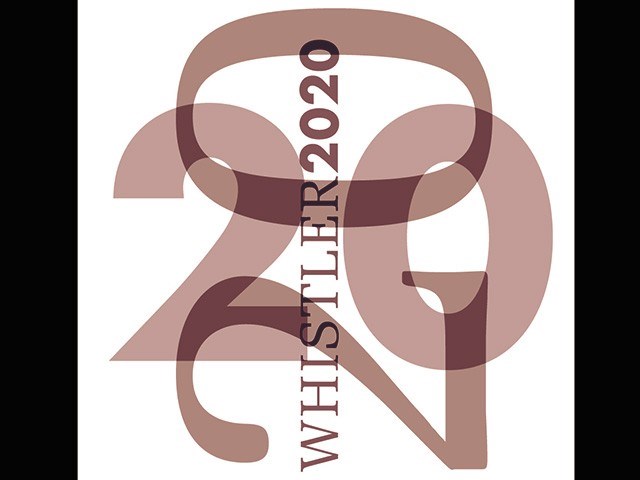By Kevin Damaskie
Whistler, situated in the Coast Mountains of western North America, has one of the greatest luxuries in the world — seemingly endless amounts of fresh water surrounding us in our wet and wild rainforest environment. But just because the stuff falls from the sky, should we be blowing it like some punch-drunk sailor on shore leave staggering around waving a fistful of cash like it’s all the money in the world? Will we wake up from our water binge parched, broke and hungover and then feel the need to respect and conserve water?
Whistler is water rich compared to the rest of the Earth. Of the 16,500 hectares of land and water that make up the RMOW, 500 hectares are lakes, streams and rivers. With all this cool, Whistler water around, and no crisis in sight, why review our consumption and attempt to conserve? Drawing potable groundwater, delivering it to homes and then treating it as waste has considerable energy and capital costs at the local level. These systems cost money, and the costs are not going down.
The average British Columbian uses 490 litres of water per day, while the rest of Canada comes in at 340 litres/day. From the Whistler2020 Monitoring Report, Whistler’s per capita daily water use in 2005 was 515 litres/person/day, which factors in visitor numbers. While this indicator has been trending down from previous years, it remains above the Whistler Environmental Strategy target of 425L. The real deal is we don’t have to make drastic global changes to conserve water here, small things are big drops in the local water bucket. Tell someone from Ethiopia how much water a Whistlerite consumes annually and they will probably tell you that amount of water could support their entire village for a year.
While the volume of water in the global system is constant, the number of people sharing this precious resource is increasing. So, while we cannot increase the supply of fresh water, we can reduce the amount we use. In arid jurisdictions like Australia, there are some folks who report getting their daily usage down to 100 litres/day through efficiency and conservation measures. In South Africa, the water supply has been privatized and many people now receive 6,000 litres/month free of charge, then pay for whatever they use beyond that. A monthly ration of 6,000 litres means 50 litres/day for a family of four.
Environment Canada reports that about 65 per cent of indoor home water use occurs in our bathrooms and toilets are the greatest offender. Applying this stat to data from the 2005 RMOW Water Monitoring Report, bathroom water use in Whistler ranges from 780 litres/day to 419 litres/day, depending on the size and type of your home.
Whistler has mandated the installation of water meters on new construction since 1993. While most customers are not yet charged on a volume-based system, information from the meters is assessed annually to determine detailed usage volumes. Establishing a volume-based water pricing system will involve evaluating rate structures that effectively lead toward increased efficiency and water conservation, while also fairly allocating municipal servicing costs and respecting resident and small-business affordability issues.
According to Environment Canada, volume-based pricing is being used by various Canadian municipalities to encourage water conservation. Like our electricity and fuel systems, users who consume less, pay less. In 1999, Canadian households on flat-rate water pricing used 70 per cent more water than those with metered households.
Municipal conservation efforts include inspecting municipal pipes and services for leaks, mandating 6 litre/flush toilets in new developments, irrigating parks and fields with non-potable well water and drafting a bylaw to eliminate the use of potable water in cooling devices like ice makers and other once-through cooling devices which use potable water and put 6 million litres of Whistler’s drinking water down the drain annually.
At home you can install low flow shower heads, toilets, check for leaks and let your lawn grow longer to lower irrigation needs. As well, check out state of the art greywater recycling systems at www.bracsystems.com .
The Whistler2020 Water Task Force of dedicated community volunteers met again this spring to recommend actions to move Whistler toward the Whistler2020 Water Strategy description of success that includes these goals: “Residents and visitors are educated about, and encouraged to protect and conserve natural water resources,” and “All potable water is used sparingly and only used to meet appropriate needs.”
To KNOW MORE about other actions that are moving our community
toward Whistler2020, or to find out how we’re performing visit
www.whistler2020.ca.
Dropping hints
• In your house check for leaks from faucets and pipes ; even the smallest drip can waste as much as 75 litres a day .
• The human body is about 70 per cent water ; we cannot survive more than a week without water.
• A mere 10 per cent of our home water supply is used in the kitchen and as drinking water.
• Indoor water use peaks twice a day year-round, in the mornings and evenings .
• The biggest peaks during the year occur in the summer , when about half to three quarters of all municipally treated water is sprayed onto lawns .
• As a community grows, the water use
grows even faster because the diversity of water uses increases with size.
• Almost 9 per cent, or 891,163 km2,
of Canada's total area is covered by freshwater.




